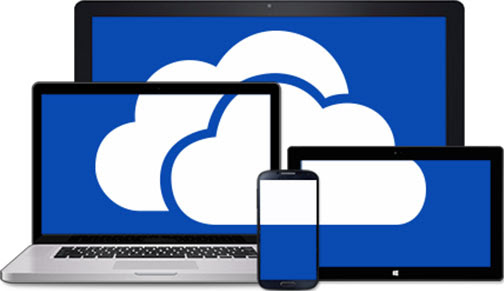OneDrive is really two drives


Yes, the future of Microsoft is in the cloud, and so far their products are pretty good. Mary Jo Foley argues, reasonably, I think, that Microsoft's cloud bet is mostly designed to drive the business side of the cloud. The theory is that people will love Microsoft's consumer cloud services and want to use them at their business.
Their implementation for one of the key parts of this picture — OneDrive — is a bit of a hack. The basic issue is that the consumer OneDrive is a conventional file storage service, like Dropbox, Google Drive and (now, finally) Apple's iCloud. Superficially, OneDrive for Business also looks like a file storage service, but it isn't. It's a completely different animal. I see this as a hole in Microsoft's strategy, although not a huge one.
I also have experience with both as I am both a paid SkyDrive – whoops, make that OneDrive – customer and an Office 365 customer. OneDrive for Business is a repurposing of Microsoft's SharePoint Workspace, which itself is what became of Groove, a very cool product back in its day, which was ten years ago or more. SharePoint has many of the characteristics of a file system, but it's way, way more. And it's way different from consumer OneDrive.
The fact that the two have different software client programs should be a clue that there's a difference. They have different clients because the programming interfaces for them are completely different, with the result that software written to the consumer OneDrive APIs won't work with OneDrive for Business and software written for OneDrive for Business won't work with consumer OneDrive.
Here's another interesting point that shocks many people when they figure it out: As Steven J. Vaughan-Nichols recently wrote for us, OneDrive for Business sometimes modifies files when you upload them to the service. I've only noticed it with HTML files, and it may very well be limited to HTML files, but it adds clauses to the HTML tag and a bunch of tags to the HEAD section, and it does all this with no notice to the user.
Specifically, it turns this:
<HTML><BODY>
simple HTML page
</BODY></HTML>
into this:
<HTML xmlns:mso="urn:schemas-microsoft-com:office:office" xmlns:msdt="uuid:C2F41010-65B3-11d1-A29F-00AA00C14882"><head>
<!--[if gte mso 9]><xml> <mso:CustomDocumentProperties> <mso:IsMyDocuments msdt:dt="string">1</mso:IsMyDocuments> </mso:CustomDocumentProperties> </xml><![endif]-->
</head> <BODY>simple HTML page
</BODY></HTML>
This is not really surprising since it's not a simple storage service, but SharePoint, and SharePoint has certain basic characteristics it wants all its HTML pages to have. The changes are probably benign 99 percent-or-more of the time, but I bet there are cases where it would silently screw things up.
Tech Pro Research
Microsoft has also been putting consumer-oriented features into OneDrive that aren't in OneDrive for Business, whereas OneDrive for Business has a simple, boring and not-flashy UI.
Finally, OneDrive for Business does not have an OS X client program. This is completely out of synch with their consumer strategy and even their enteprise strategy, since Office 365 comes with OS X installation rights.
Why did Microsoft do it this way? I'm just guessing here, but I assume that part of the reason is that Office 365 already had SharePoint Workspace working and integrated with their directory and authentication system. OneDrive consumer uses the Microsoft account (formerly live.com/Hotmail, formerly Passport) authentication system. These two databases are completely incompatible and not integrated. I've personally experienced problems from this, when I moved my email address from being my live.com address to my Office 365 address. Tech support had to escalate the request before they figured it out.
So the bottom line for me is if I'm a user who has come to like the consumer OneDrive and I get Office 365, partly so that I can use OneDrive for business, I'm going to be confused and/or disappointed.
Related stories: